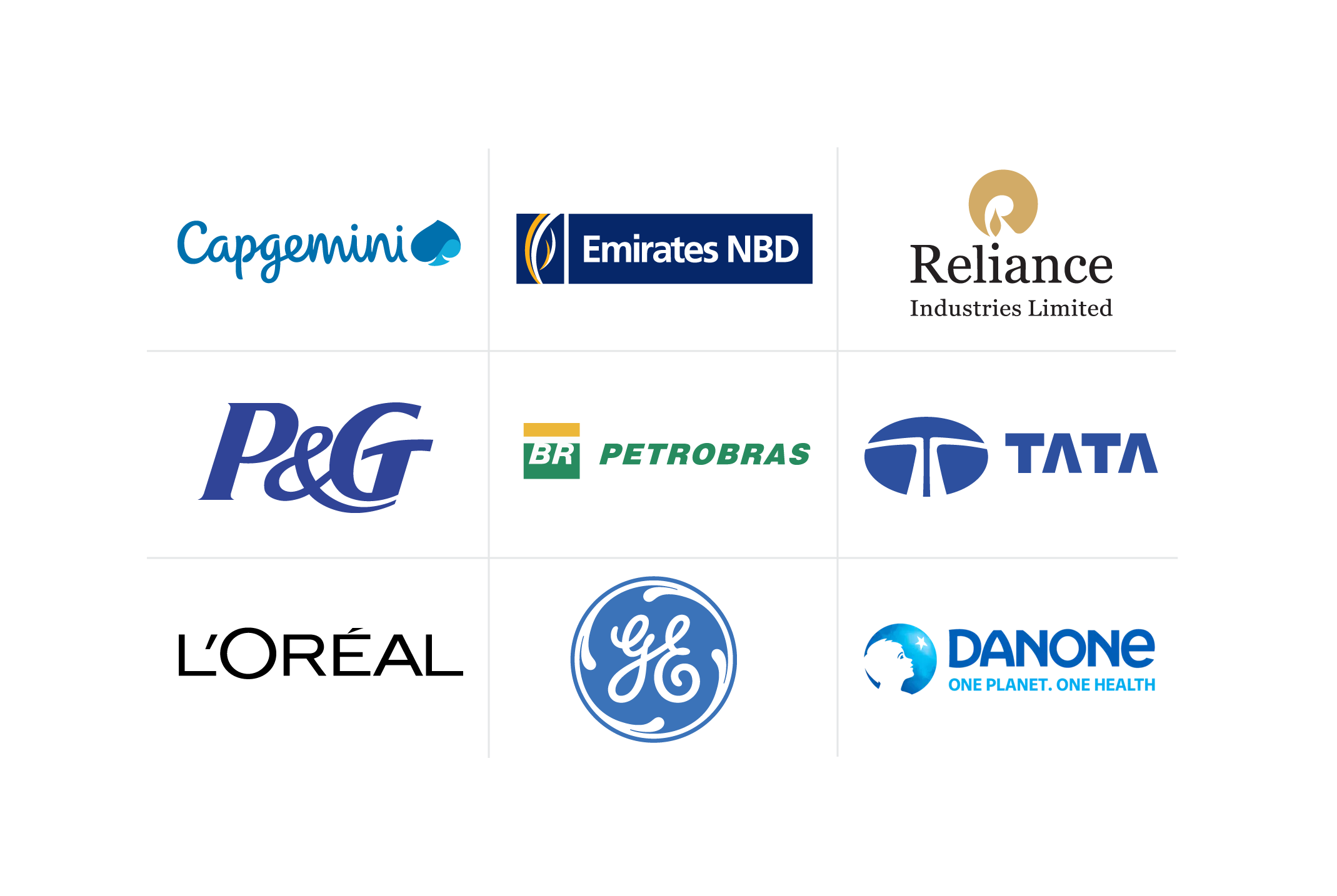Mastering Learning Outcomes: A Guide to Enhancing Corporate Training
Create effective corporate training by setting clear learning outcomes. These outcomes guide planning, ensure training meets business goals, and improve employee satisfaction and retention.
![[Featured Image]: A group of employees participates in an engaging corporate training with clear learning outcomes defined.](https://d3njjcbhbojbot.cloudfront.net/api/utilities/v1/imageproxy/https://images.ctfassets.net/2pudprfttvy6/6y5jFc1loxcPwojMNqjTaZ/50f0ccaf22b62a7b98ed960bbc44bc3e/GettyImages-1487907648.jpg?w=1500&h=680&q=60&fit=fill&f=faces&fm=jpg&fl=progressive&auto=format%2Ccompress&dpr=1&w=1000)
Chances are that your employees want more training. More than half of employees participating in the American Upskilling Study expressed interest in learning new skills, and those who have opportunities to do so tend to be happier at work [1]. Creating a robust corporate training program that meets these needs provides a valuable incentive to attract and keep team members.
Learning outcomes are the skills, values, and knowledge learners should have after completing a class or training program. According to the creators of the Understanding by Design framework, thinking about the desired results when planning lessons leads to more purposeful lessons and greater understanding and allows facilitators to make adjustments to meet the needs of the learners [2].
Understanding the power of learning outcomes
To understand the power of learning outcomes, consider the last time you asked someone for directions or consulted a navigation app. You have to share the destination. Otherwise, in the words of the Cheshire cat in Alice in Wonderland, "...it doesn't matter which way you go" [3]. You can consider learning outcomes the destination for your training.
You can use learning outcomes before, during, and after training sessions.
Before: As you plan sessions, referring to learning outcomes helps you choose the information you share with participants and the activities they will engage in.
During: You can share the learning outcomes with participants so they know what you expect them to learn. Referring back to the learning outcomes also helps you stay focused on the goals as you present.
After: Learning outcomes can help you assess the effectiveness of the training. You can ask participants to share how they've met them or use them to create a formal assessment of the material.
How to craft effective learning outcomes
Effective learning outcomes involve a strategic approach that starts with identifying the specific skills, knowledge, and behaviors employees need to develop to meet business goals. The outcomes should focus on what the learner will know or be able to do after completing the training. This differs slightly from a training goal or objective, encompassing how the training will impact the organization.
Learning outcomes often take this form:
"As a result of participating in [insert name of program], you will be able to [insert an action verb] [insert learning statement].
If you're training new employees to use the company's email system, your learning outcome might look like this:
"As a result of participating in the second onboarding training session, you can access your company email and set up your signature."
Bloom's Taxonomy selects action verbs in a learning outcome statement, including define, describe, use, demonstrate, compare, select, design, and create. The learning statement should reflect one of three types of knowledge:
Content: facts and information (names and uses of products)
Process: the ability to work through a process or procedure (how to send a meeting invite to team members)
Conditions: selecting the type of knowledge needed for a specific situation (responding to a complaint from a customer)
SMART learning outcomes
The SMART acronym is a helpful tool for creating effective learning outcome statements. SMART is an acronym for specific, measurable, agreed upon, realistic, and time-framed. See how the learning statement above embodies these ideas:
Specific: Employees know they should be able to complete two tasks: open the email system and set up a signature.
Measurable: Participants who complete the training will have an email signature set up, and the signature is proof that they were able to open the email system.
Agreed upon: In most organizations, email is an essential communication tool that everyone should be able to use.
Realistic: Employees can demonstrate their mastery of these two tasks within a single session. Using this as a learning outcome for a full-day session would be unrealistic.
Time-framed: This learning outcome is for one onboarding training session, and employees know it's the second session.

Tips for creating effective learning outcome statements
Creating learning outcome statements is a process that ideally starts before you begin planning for training sessions. Consider the following tips as you work:
Align learning outcomes with organizational goals and performance metrics.
Stay focused on what the participants can do instead of what the facilitator will share.
Use Bloom's Taxonomy to create learning outcomes at different cognitive levels.
Use action verbs. Explaining three benefits of software as a service is easier to measure than improving knowledge of software as a service.
Brainstorm a list of all possible learning outcomes. Rank each idea and narrow your list to the knowledge and tasks that are most important for the group of people you will train.
Using learning outcomes to measure impact and training ROI
You can use learning outcomes to measure the impact and ROI of your corporate training program, which helps ensure the training you offer employees is relevant to their work and helps the organization reach its goals. Learning outcomes help make the learning process tangible, so you know what's working and what needs to be improved. Review the following metrics and how you can tie them to learning outcomes:
Engagement: How many employees attend training? Consider variables like the facilitator, modality, and topic to identify what engages employees.
Retention: How long do employees stay with the company after completing training? You can also look at the types of training employees complete and cross-reference them with tenure.
Satisfaction: Ask employees to rate their experience, ask for feedback to improve the training, and suggest future topics.
Skill acquisition: You can give participants a before-and-after survey to assess their knowledge or competence using a skill.
Technology adoption: Keep track of employees using new technology due to the training.
Time to competency: Ask employees the number of days or weeks it took them to apply the skills they learned. Alternatively, you may look for a measurable increase in employees applying their knowledge.
Enhance your employee training with engaging online courses
Employees generally want more training, and those with opportunities to learn new skills tend to be happier at work. Creating a robust corporate training program with clear learning outcomes provides a valuable incentive to attract and retain team members. Learning outcomes specify the skills, values, and knowledge learners should acquire, ensuring that training is purposeful and adaptable to meet learners' needs.
With Coursera for Business, you can train teams across your organization in the skills that matter most in today’s digital economy. Your employees will gain access to content from 350+ leading universities and industry partners, where they can build real-world experience with innovative skills, tools, and technologies while earning globally recognized credentials. Our customizable, scalable learning solutions balance workplace and technical skills training in diverse formats, from video clips to guided projects and Professional Certificates. Accelerate your digital transformation and equip employees to drive growth with Coursera.
Article sources
Amazon. "The American Upskilling Study shows workers want skills training, https://www.aboutamazon.com/news/workplace/the-american-upskilling-study-shows-workers-want-skills-training." Accessed June 15, 2025.
This content has been made available for informational purposes only. Learners are advised to conduct additional research to ensure that courses and other credentials pursued meet their personal, professional, and financial goals.

